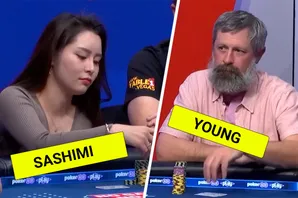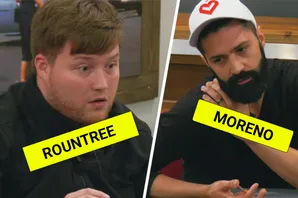Three-Card Poker (or 3-card poker) is one of the most popular card-table games spread in casinos throughout the world. It’s a great casino-table game for beginners because it’s fairly similar to regular poker, with familiar hand rankings like pairs, flushes, and straights.
This exciting card game is a fun variant to play next time you hit the casino and want to try something other than the usual staples, like roulette and blackjack. You’ll usually find 3-card poker tables together in a specific section of the pit. And if you prefer to play on the web, online casinos also frequently offer 3-card poker.
To play three-card poker at any casino around the world, all you need to do is find an empty seat at one of the tables where it’s spread, then buy in with the table stakes.
What are the rules to 3-card poker?
In 3-card poker, the dealer and the players each get three cards—not the five you’d see in five-card draw or the seven you’d see in stud games. After they see their cards, the players decide if they want to continue in the hand or fold. If they fold, they give up the bet they placed to start the hand.
If the players continue, they must double their original bet, then go head-to-head against the dealer. If the player has the stronger hand, they win that hand, often winning bonuses, too, if their hand is very strong.
How to play 3-card poker
After players sit down at the table and buy chips from the dealer, they begin play by making two different bets: an ante wager and a pair-plus bet (which pays out if their hand includes a pair or better).
You have to pay the ante wager to play, but you can skip the pair-plus bet. But as we’ll see, skipping the pair-plus bet isn’t wise, because it’s often the best way to make money in this game.
The cards
The dealer deals three cards face-down to every player, and the dealer also gets three cards. Players then look at their cards and decide if their hand is strong enough to stay in the hand. The dealer’s cards have to qualify with a hand of queen-high or better. Even if the dealer’s hand doesn’t qualify, the players can still win money.
Ante wager and play wager
Each player’s ante wager kicks off the action. If a player decides that their cards aren’t good enough to play, they end up losing their ante wager. If the player decides to play the hand, they match the ante bet with an additional play wager to stay in the hand, and get ready to face off with the dealer. The ante bet and play bet are often set at $10 in low-stakes games.
If a player’s hand defeats the dealer’s hand, the player wins the hand. In that case the dealer pays even odds on the ante wager as well as the play wager. But even if the dealer’s hand doesn’t qualify, the ante wager pays at 1:1 and the play wager is returned. The player can also still win an ante bonus and a pair-plus bonus if the dealer’s cards don’t qualify.
Pair plus bet
If a player’s hand holds a pair or better, the dealer will pay out to the player according to the pair-plus bet odds below.
Pair-plus odds
- Straight Flush: 40:1
- Three-of-a-kind: 30:1
- Straight: 6:1
- Flush: 3:1
- Pair: 1:1
Ante bonus
If a player has a straight, three-of-a-kind, or straight flush, they win an ante bonus payout, too. They win this bonus even if the dealer’s hand wins and even if the dealer’s hand doesn’t qualify to play. The ante bonus pays at 5:1 for a straight flush, 4:1 for three-of-a-kind, and 1:1 for a straight.
Once a hand of 3-card poker finishes, with all bets paid, the dealer deals another hand.
3-card poker rankings
The rankings for a three-card poker hand are somewhat similar to those in other poker games. You’ll find some familiar hands in 3-card poker, including royal flushes, three-of-a-kind, straights, and flushes. However, in this game a straight beats a flush, and three-of-a-kind is stronger than both straights and flushes.
In regular poker, three-of-a-kind is weaker than a straight or a flush. Below, you’ll see a breakdown of the 3-card-poker hand rankings, starting with the weakest. Note that it’s impossible to make a full house in 3-card poker, as that hand requires five cards.
3-card poker hand breakdowns — weakest to strongest
High Card: A hand that’s not connected in any way and is valued by the highest card, with ace-high as the strongest and 5-3-2 as the weakest hand in 3-card poker.
One Pair: Two identical cards. Two aces is the highest pair possible, and two 2s is the lowest-ranking pair.
Flush: Three cards of the same suit that don’t connect. A flush isn’t as valuable as a straight in 3-card poker because it’s easier to make a flush.
Straight: Three consecutive cards that aren’t all the same suit. For example, ace-king-queen is the best possible straight, and ace-2-3 is the lowest-ranked straight.
Three-of-a-kind: Three of the same card. This hand is normally weaker than a flush or straight in a regular poker game. However, it’s one of the strongest possible hands in 3-card poker, beaten only by a straight flush or a mini royal flush.
Straight Flush: Three cards of the same suit and in consecutive ranking. King-queen-jack is the highest-ranked straight flush in three-card poker, barring a mini royal flush.
Mini Royal Flush: An ace, king, and queen all of the same suit. No suit is considered stronger than any other with a mini royal flush
What are the odds of winning 3-card poker?
As with any casino game, the odds in 3-card poker slightly favor the house. In fact, the exact odds are that the dealer wins 55.03% of the time, the player wins 44.91% of the time, and there’s a slight chance (0.6%) that there is a push (where the dealer and a player both have equal hands). With a push, the dealer returns the bets to the player.
Another key factor is whether the dealer’s hand qualifies or not. If the dealer doesn’t have a queen or better in their hand, the hand doesn’t qualify as playable. If the dealer’s hand doesn’t qualify, the player’s ante wager pays 1:1 and the dealer returns their play and pair-plus wagers.
If the dealer does have a qualifying hand, they compare their hand to the player’s hands. While it’s possible to make money by simply beating the dealer, the bigger payouts often come from the pair-plus bet.
3-card poker strategy
Since there are no community cards or shared cards of any kind in 3-card poker, the strategy is somewhat straightforward. The complete average hand in 3-card poker is queen-6-4. Therefore, the optimal strategy would be to play all hands greater than or equal to queen-6-4, and fold all hands worse.
We can break down this advice by percentage as well. When you raise or match your ante, you can expect to win 5.29% on the raise. However, you can also expect to lose 8.66% on the ante. Although raising gives a 3.45% edge to the house, folding creates a bigger house edge of 7.65%.
The big money often comes from the pair-plus bonus. A straight will do wonders for you at 6:1, as it will cover your bets for the next few hands. It’s a mistake to skip out on the pair-plus bet. Casinos will often run big-bet jackpots that players can unlock by drawing either a mini royal flush or a specific three-of-a-kind.
Casinos use big-bet jackpots as a strategy to increase their take, while at the same time giving players a sweat at another big payday option.
Conclusion
Three-card poker is a fast, fun game for beginners and gambling experts alike. It’s also a nice alternative for those who know Texas hold’em and stud poker. Since you only have to worry about beating the dealer in 3-card poker, you don’t always have to have a hand of significance to earn some money, but you should know the basic odds and hand strengths.
Most importantly, make sure you don’t skip out on the pair-plus bonus bet, because that’s where you’ll make a good amount of your winnings in your successful 3-card poker sessions.
Featured image source: Flickr by Poker Photos used under CC license



























